

— Products —
 Consumer hotline +8618073152920
Consumer hotline +8618073152920 WhatsApp:+8615367865107
Address:Room 102, District D, Houhu Industrial Park, Yuelu District, Changsha City, Hunan Province, China
All products
4-20mA anemometer is a type of anemometer that utilizes a 4-20 milliampere (mA) current loop for transmitting analog signals. Here's how a 4-20mA anemometer typically functions: 1. Anemometer Sensor: The anemometer sensor measures wind speed and direction using various technologies such as cup, propeller, or sonic anemometry. 2. Signal Conversion: The analog signals from the anemometer sensor are converted into a 4-20mA current signal. The 4mA signal represents the lowest end···
Tel/WhatsApp:+8615367865107
Email:Arvin@niubol.com +Nearly 100 partner company in more than 68 countries. We are committed to providing high-quality, practical products to meet your needs and help you solve problems.Product Details
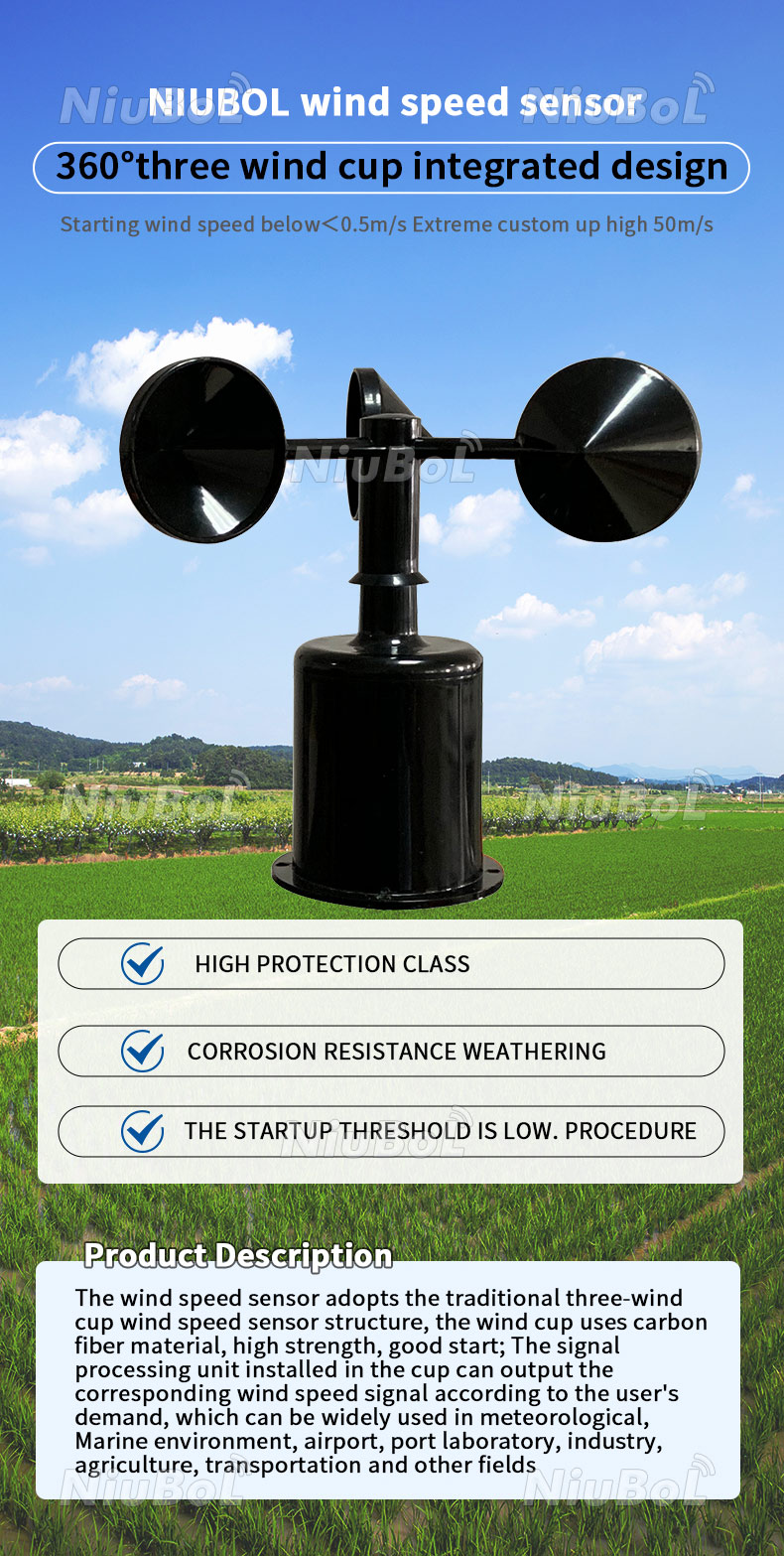
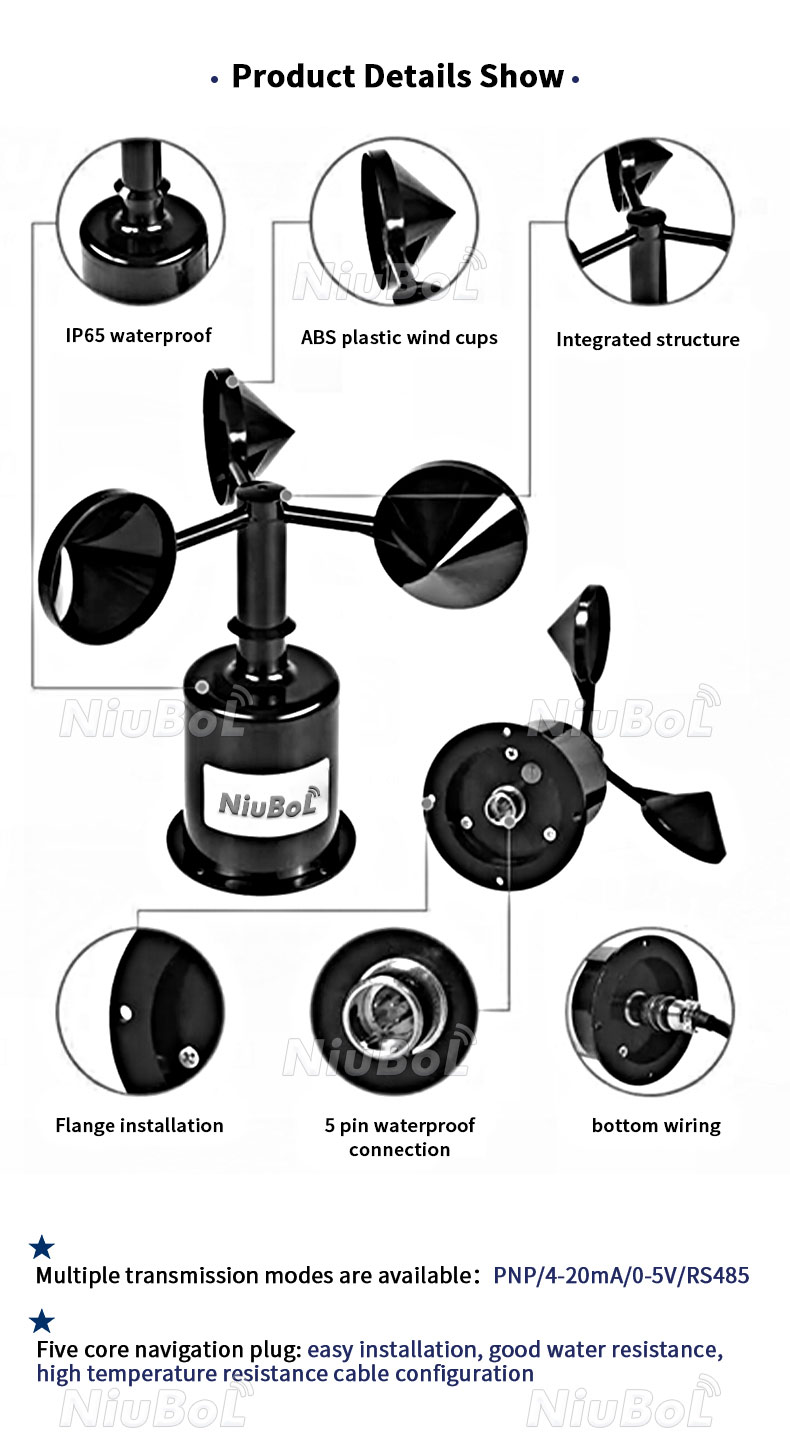
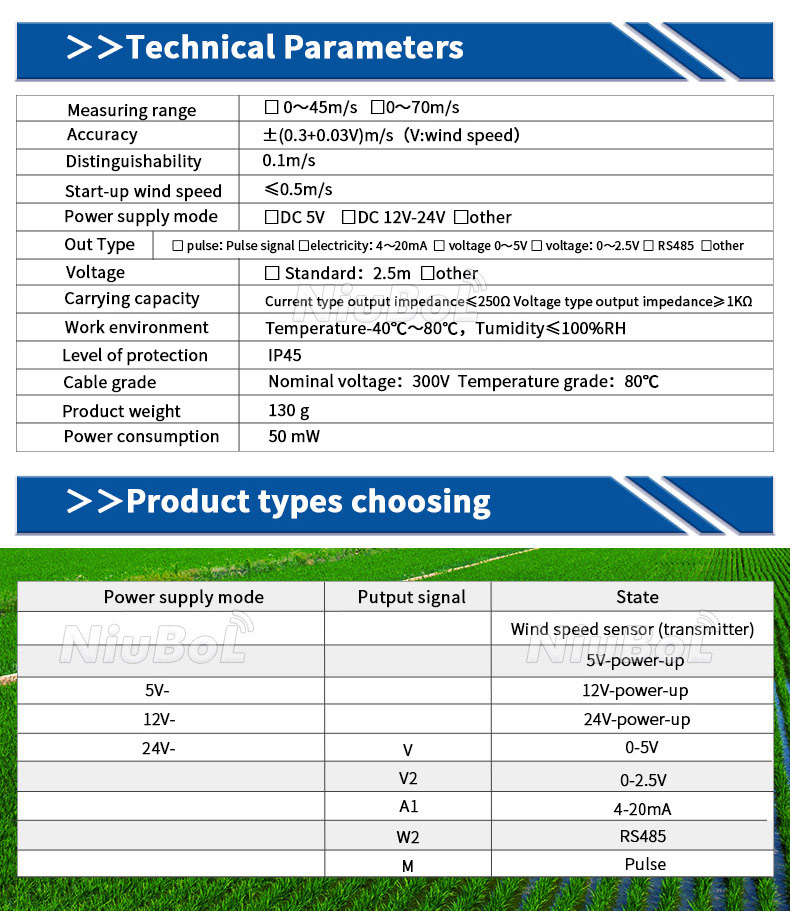
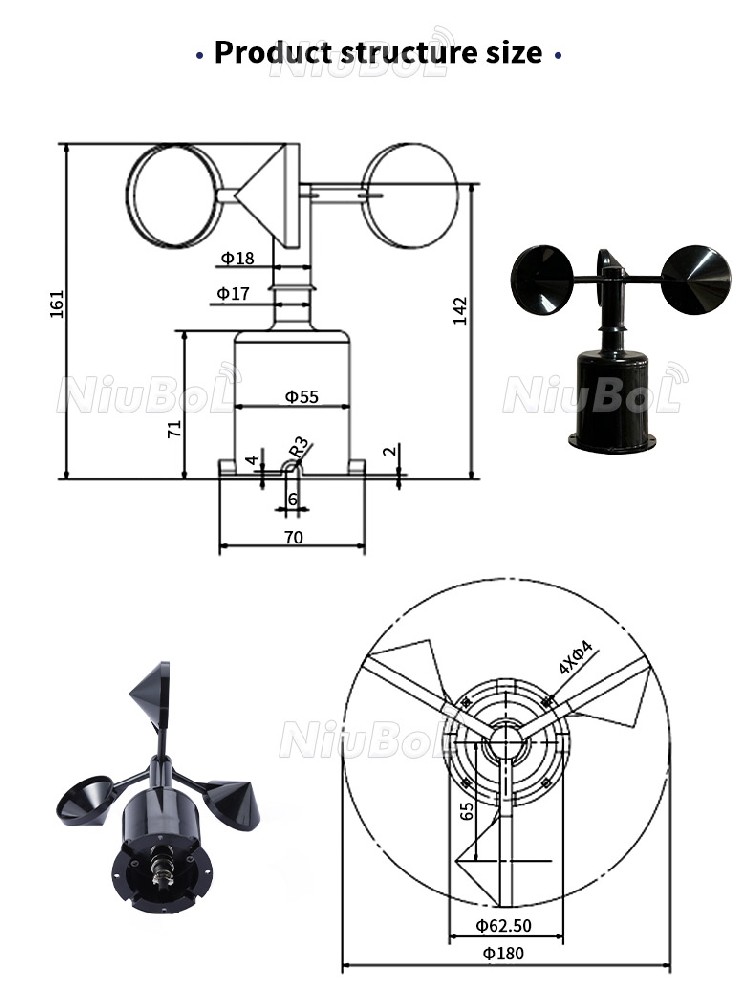
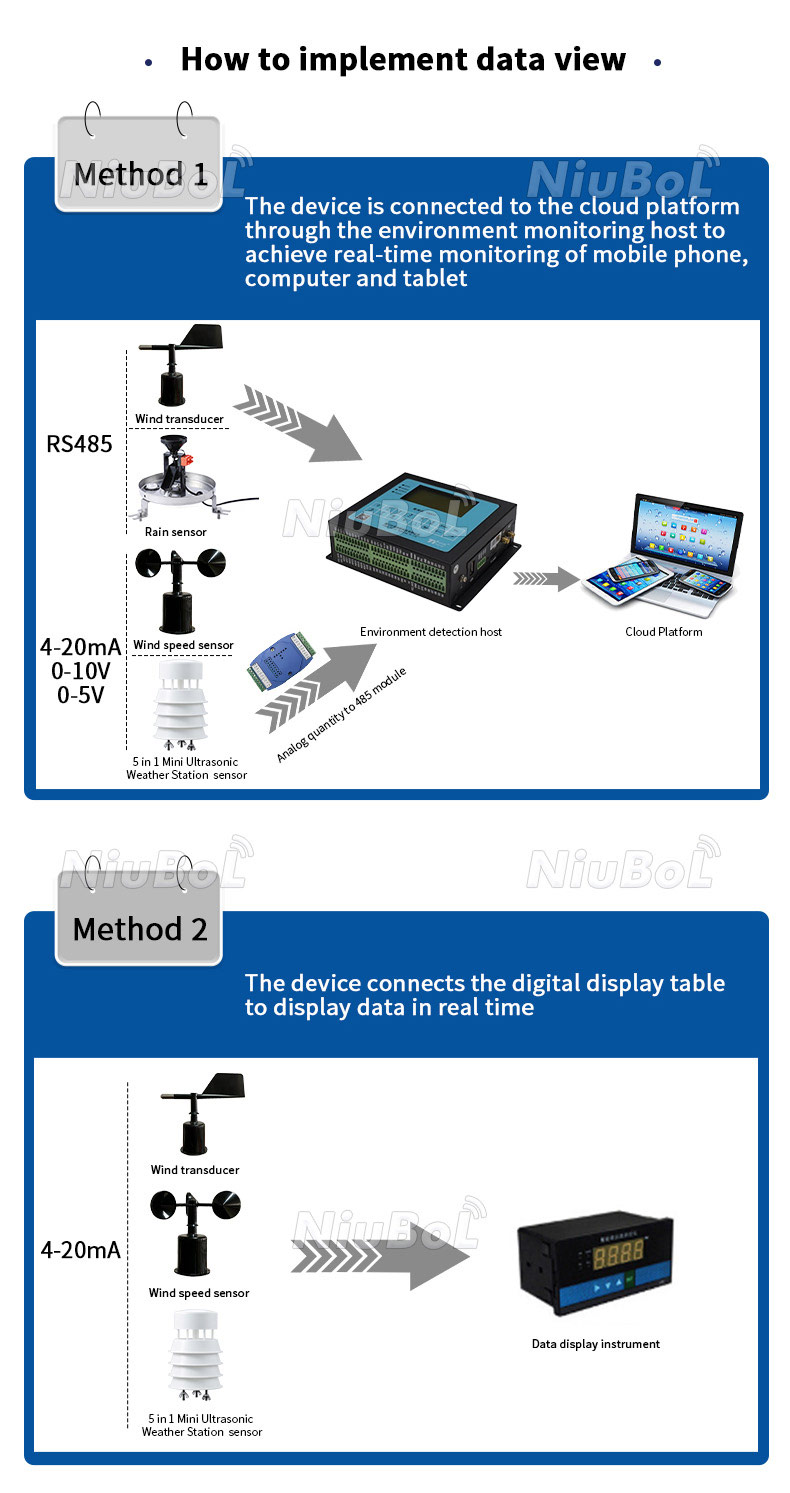
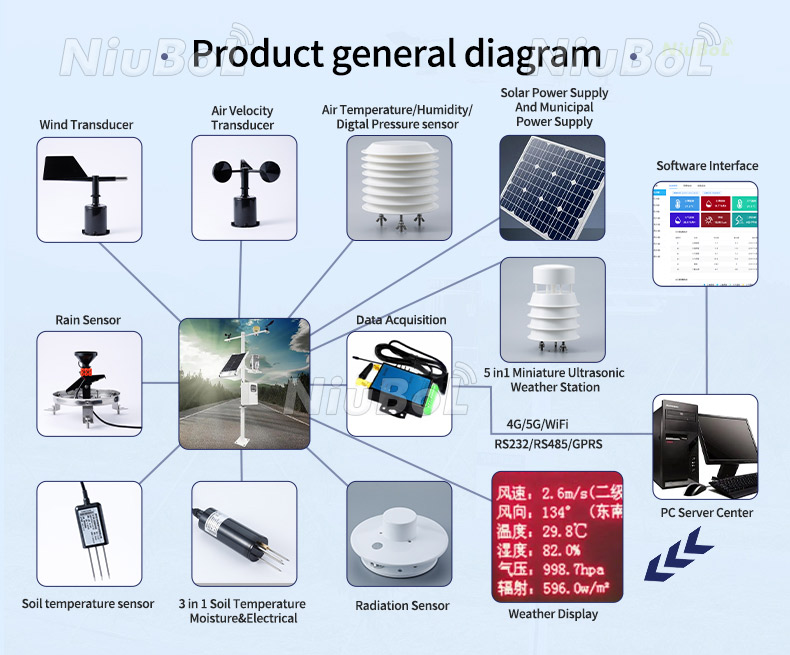
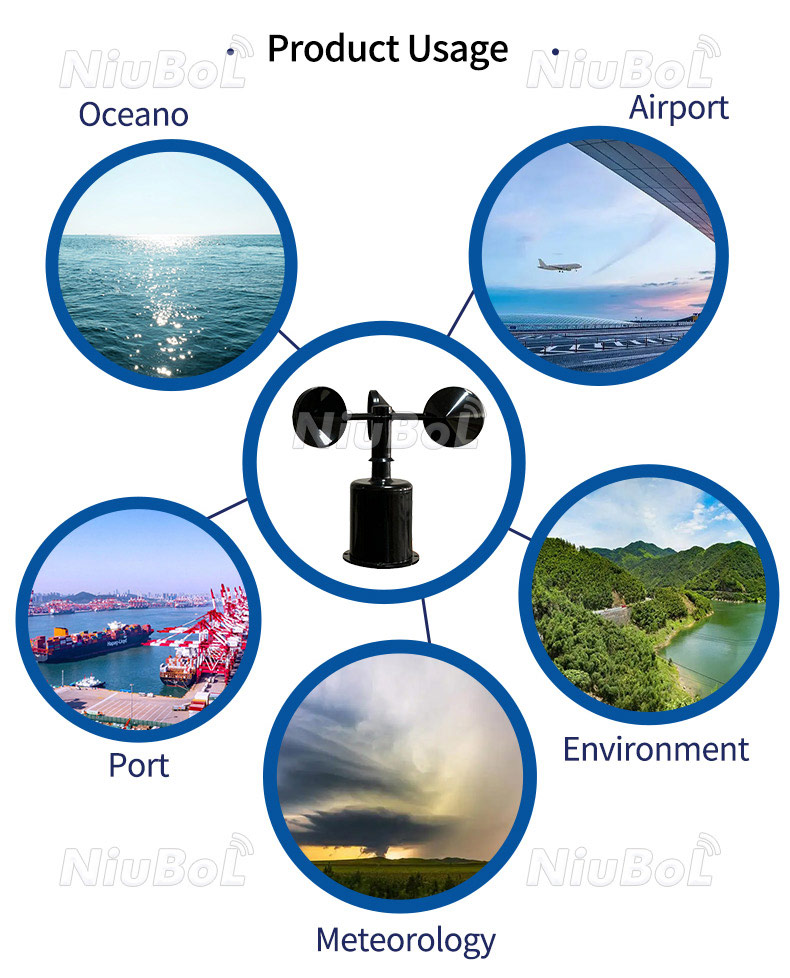
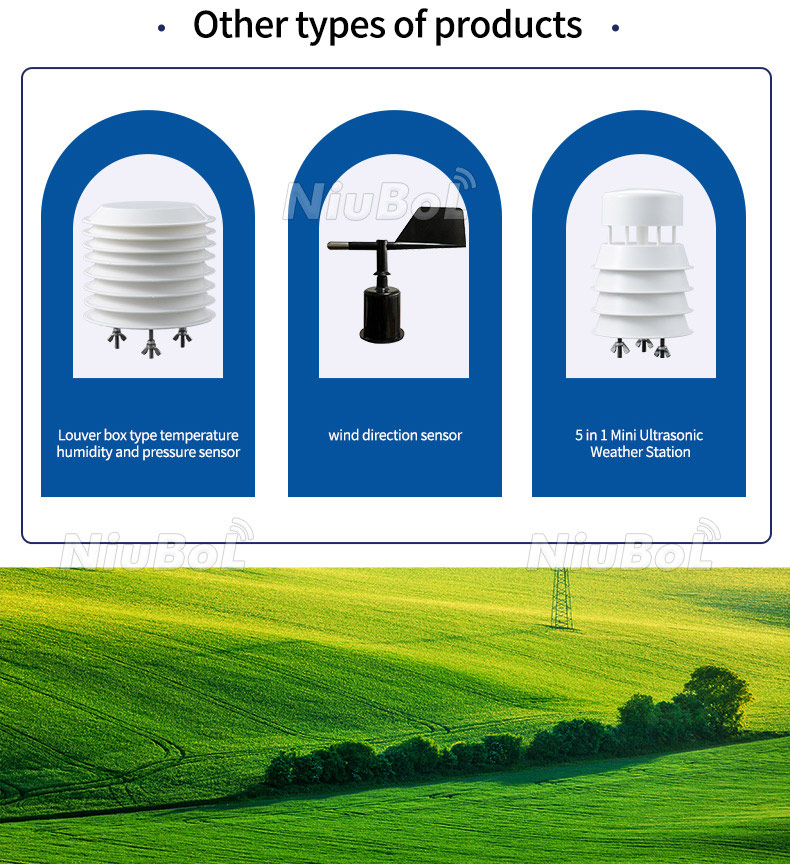
Anemometer is an instrument or device used to measure wind speed. It determines the wind speed by measuring the force or effect of the wind on its sensing components, such as cups, blades or hot wires.
4-20mA anemometer is a type of anemometer that utilizes a 4-20 milliampere (mA) current loop for transmitting analog signals. Here's how a 4-20mA anemometer typically functions:
1. Anemometer Sensor: The anemometer sensor measures wind speed and direction using various technologies such as cup, propeller, or sonic anemometry.
2. Signal Conversion: The analog signals from the anemometer sensor are converted into a 4-20mA current signal. The 4mA signal represents the lowest end of the measurement range (e.g., zero wind speed), while the 20mA signal represents the highest end of the range (e.g., maximum wind speed).
3. Current Loop: The anemometer is connected to a receiving device, such as a data logger, PLC (Programmable Logic Controller), or control system, using a two-wire current loop. The anemometer modulates the current in the loop to represent the measured wind speed and direction.
4. Wiring: The anemometer is wired in series with a power supply and the receiving device. The current loop typically requires only two wires, simplifying installation and reducing susceptibility to electrical noise over long distances.
5. Current Signal: The anemometer sends the measured wind speed and direction information as a 4-20mA current signal. The magnitude of the current corresponds linearly to the measured parameter within the specified range.
6. Receiving Device: The receiving device monitors the current in the loop and converts it back to a voltage signal for processing. This device can then display, log, or further manipulate the wind speed and direction data as needed for monitoring or control purposes.
7. Measurement Range: The 4-20mA signal has a standardized range of 4mA to 20mA, which allows for easy integration with various types of industrial instrumentation and control systems.
4-20mA anemometers are commonly used in industrial applications, process control systems, and remote monitoring where robustness, noise immunity, and compatibility with existing instrumentation are key considerations. The 4-20mA current loop standard provides a reliable method for transmitting analog signals over long distances and in electrically noisy environments.
4-20mA anemometer is a wind speed measuring instrument whose output signal is 4-20mA current, which is characterized by high measurement accuracy, good stability and strong anti-interference ability. The following are the main uses of 4-20mA anemometer:
Industrial automation control: the output signal of 4-20mA anemometer can be matched with various industrial automation control systems for monitoring the wind speed in the production process, so as to realize the precise control of the production environment and improve the production efficiency and product quality.
Environmental monitoring: In the field of environmental protection, 4-20mA anemometer can be used to monitor the diffusion and transmission of air pollutants, providing data support for air quality assessment and pollution control.
Energy Management: In the field of energy management, 4-20mA anemometer can be used to monitor the wind speed of wind turbines to assess the utilization of wind energy resources and the power generation efficiency of wind turbines.
Agricultural applications: In the field of agriculture, 4-20mA anemometers can be used to monitor the wind speed, wind direction and other meteorological parameters in farmland, so that farmers can rationally arrange the planting and harvesting time of crops and improve the efficiency of agricultural production.
Meteorological monitoring: weather stations can use 4-20mA anemometer to monitor wind speed and direction and provide meteorological data to support weather forecasting and climate research.
In short, 4-20mA anemometer has a wide range of applications, suitable for industrial automation control, environmental protection monitoring, energy management, agricultural applications, meteorological monitoring, etc., providing important data support and technical guarantee for the production and scientific research of various industries. Please note that the specific use, but also need to choose the right 4-20mA anemometer according to the actual application scenarios and needs.
Sensors & Weather Stations Catalog
Agriculture Sensors and Weather Stations Catalog-NiuBoL.pdf
Weather Stations Catalog-NiuBoL.pdf
Related recommendations
 Multi-Depth Soil Sensor RS485
Multi-Depth Soil Sensor RS485 TDR Soil Moisture Sensor
TDR Soil Moisture Sensor Pyranometer Solar Radiation Sensors
Pyranometer Solar Radiation Sensors Soil ph sensor
Soil ph sensor Tipping Bucket Rain Gauge
Tipping Bucket Rain Gauge Air Temperature and Humidity Sensor
Air Temperature and Humidity Sensor
Screenshot, WhatsApp to identify the QR code
WhatsApp number:+8615367865107
(Click on WhatsApp to copy and add friends)